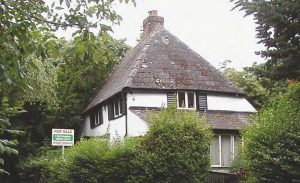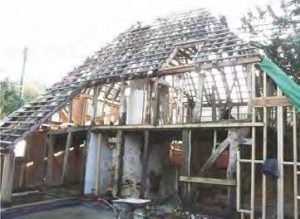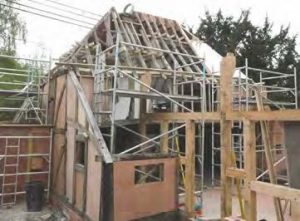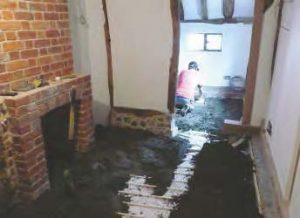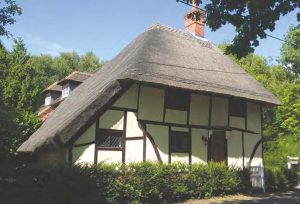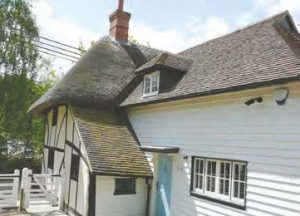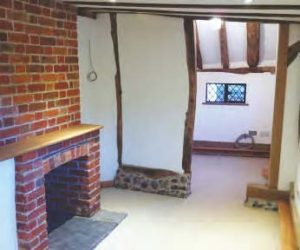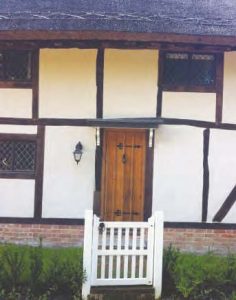A Hidden Gem Uncovered
Adrian wood explains how he painstakingly restored a historical ‘chocolate box’ grade II listed 16th century thatched cottage to provide the perfect 21st living accommodation
It was the location that attracted Adrian Wood to the rather forlorn Crown Hill Cottage in his hunt for a family home. The rural half-acre site on the edge of ancient woodland ‘ticked all our boxes’, he says, so Adrian and his wife successfully bid for the property.
Their initial thoughts were to demolish the tired-looking house and build something new. Plans were drawn up and submitted to the council but, as he started stripping out the cottage, Adrian came across features which indicated it was very old indeed. Having worked on restorations for others in his trade as a carpenter, he realised that he himself may now be the owner of something special.
Canterbury Archaeological Society took a look and dated the house to the 16th century, saying that the typical Kentish cottage was one of only a few surviving intact with the original frame and, most impressively, a very rare wooden smoke hood (most of these have been unsurprisingly destroyed by fire). The house had been built almost certainly with timber taken from the surrounding Perry Wood. Other original internal features include wattle and daub, and a patch of chalk and flint wall which Adrian has left exposed.
The house was quickly spot-listed as of Grade II importance. “We changed our plans to a project of restoration, with a sympathetic new extension at the rear,” says Adrian. It’s taken a long time – he bought the house in 2007 and only moved in at Christmas in 2012 – but all the family are more than satisfied. “When my wife had stepped inside the house for the first time, she didn’t like it at all. It was smelly and neglected. Now she would not live anywhere else,” says Adrian. “We love it here.”
For a while, the family split their time between a fl at in Canterbury and a caravan in the cottage garden. It was difficult to get a loan for the work until the house was habitable, and Adrian had to
fit the restoration of his own house around his work commitments to clients.
Now it’s finished he’s clearly proud of his labour of love, which has served to confirm his professional view that property projects tend to evolve. It’s important to start with an architect’s plan, he says, “but you never know what’s going to turn up” – and he advises his customers that they have to be prepared for that. “This is why I like working with old buildings,” he says. “They are wonky and twisted and need skill.”
That suspiciously steep roof has been thatched, as it would have been originally, and many beams have been carefully uncovered. The transition from the old rooms of the tiny cottage is seamless into the modern extension, which has new beams in keeping with the old but of course many mod-cons too.
Adrian established WW Carpentry and Building in 1992 and specialises in projects such as farm building conversions, period property restorations, listed building works and traditional oak framing throughout Kent and Sussex. “The Passion of Imagination and Creativity” is how he describes his work on his website wwcarpentryltd.co.uk – and perhaps nowhere illustrates this quality more clearly than his own beautiful Kentish cottage home.
Originally published in our Autumn 2017 issue.
WW Carpentry
Perry Wood, Selling ME13 9RZ
wwcarpentyltd.co.uk
